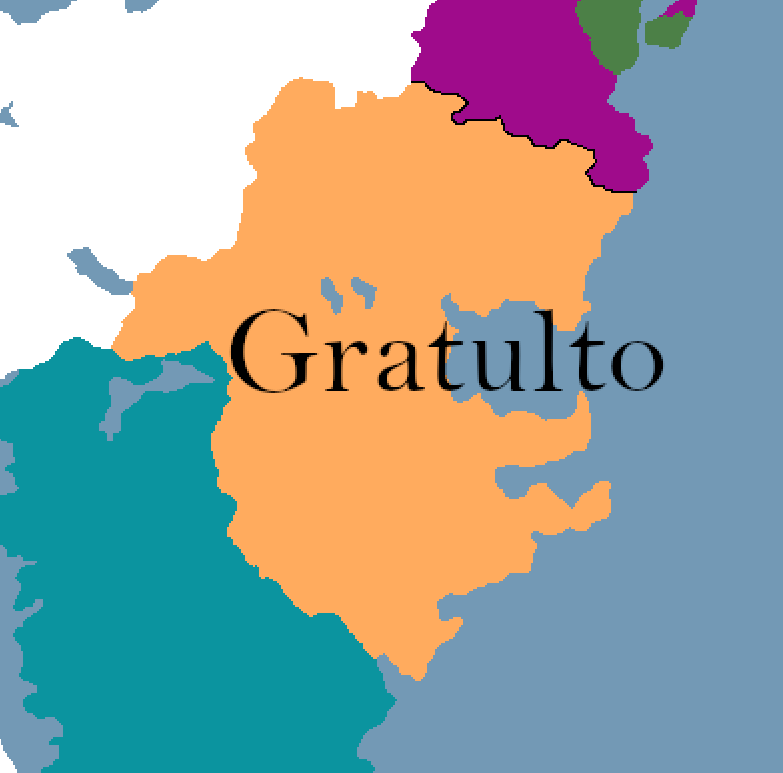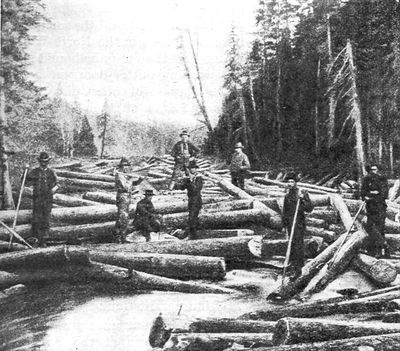This is a joint claim between myself and Pagi
Flag:
Nation Name (long): Ñawwqutian Free State
Nation Name (short): Ñawwquta IPA:/nya:quta/
Motto: Freedom for all Peoples of the World
National Animal: Pied Crow
National Flower/Plant: Lilly of the Valley
National Anthem:: The People of Forest and Valley
Capitol and Largest City: Yadñawii
Demonym: Ñawwqutian
Language: Quarii Axdelian, Gratultan Creole, Qayami, Impelanzan
Species: Cava, Human
Population: 8.2 million
Government type: Unitary Democratic Republic
Leader(s): President
Legislature: Y Senedd
Formation:1795
Total GDP: $90.2B
GDP per capita: $11k
Currency: Crest
Calling Code: TBD
ISO 3166 code: NQ, NWQ
Internet TLD: .nwq
Historical Summary:
Summary
In prehistory the Southern reaches of Arcturia were inhabited by predominantly humans with some minority species, such as the Lupines on and around the island of Paradis. Impelanza was the first civilisation to venture into modern Ñawwquta, circumnavigating the Tawusian cape and bringing settlers who scraped a living from the relatively unproductive land from farming livestock and ending up naturalising into an element of the local population as the empire collapsed.
Kormistazic Period
With the reorganisation of Kormistazm into the Third empire in 1101 CE it began leading expeditions towards Arcturia, racing against other Auroran powers to establish ports on the East coast. With its advantageous position, Kormistazm led a much more significant effort to assert control over the coast in a generally two pronged effort. The northern effort was for the agriculturally productive and strategically important Quarii coast, whilst the southern prong was for Gratulto and its rich mineral reserves. What would become Ñawwquta lay between the two, hosted a mix of spillover from the two main efforts and Qayami from Baridabadi (which at this point controlled the coast adjacent to the island) and would have an economy trading with farmers for lumber and livestock. Whilst the initial colonisation was peaceful, the push inland and later formation of the Kormistazic Arcturian territory - which stretched from Tawuse in the south all the way to the Arsalic Commonwealth and Morstaybishlian Lokania in the north - came with a wave of violence against the native population, and alongside several mysterious plagues would result in Cava slowly displacing Humans to form the majority.
The Kormistazic colonisation of Arcturia, with its high demand for manpower, numerous border conflicts and quickly diminishing returns on investment, would be one of the key factors in its decline from the 14th century onwards. With the empires capitulation to Morstaybishlia and the Kormistazic Arcturian Territories organisation into the mayflower Lousquarii Empire would leave the former possessions divided between the rival powers of Quariin and Gratulto, with Qayam holding onto Baridabadi.
Ñawwqutian Gratulto
The Duchy of Gratulto declared independence from the nascent Lousquarii empire in 1576 (Figure 1) following a relaxed military presence in the southern tip of Arcturia. Gratultan territory included present-day Gratulto and expanses of present-day Ñawwqutian territory (cities of Llynocchio, Accendrws, Gwastadirol, and Marchanto). Other than minor skirmishes with the Tawusians, territory remained unchanged until the succession crisis of 1687, and the beginning of the Tawusian unification war in 1693 following contested claims to the throne. The Tawusians occupied Gratultan territory resembling present-day Gratulto within 3 years of war. However, under threat of Tawusian expansion northwards into remaining Gratultan territory, Quarin and Qayam crossed the northern Gratultan border to repel the Tawusian advance. By 1706, the joint forces had overwhelmed the Tawusian military, and had pushed Tawuse to the border of the present-day Tawusian Cape. Following the treaty of 1706, Gratulto was partitioned, governed by Former Tawuse and as a condominium between Quariin and Qayam (later becoming an integral part of Ñawwquta). To this day, despite Tawusian Gratulto receiving autonomy as part of the Tawusian Cape, Northern Gratulto remains under Ñawwqutian control.
Figure 1. The Duchy of Gratulto (1576)
The impact of the Gratultan dialect is still seen in Ñawwquta, with the names of some North Gratultan towns and cities retaining their pre-partition names. Additionally, a Gratultan creole is spoken in some rural regions, although endangered.
Post-partition
The combined governance of Northern Gratulto did not reach the 19th Century. With the Quarii First Republic falling to a Morstaybishlian-backed coup in 1788, the future of the condominium was brought into question as Quarii-Qayam relations quickly soured. With a weakened governing force, in 1790 democratic revolutionary dissidents within the military seized the opportunity to revolt against the Quarii government in the city of Yadñawii (Uniquely founded by settlers from the southern Kormistazic cities of Barque and Sekan). Seeing an opportunity to weaken Quariin, Qayam intervened shortly thereafter, declaring full control over Northern Gratulto and materially supporting the Yadñawii revolutionaries who proceeded to rally support from the region as a whole to drive off attacks from Quariin in the North. The revolution would succeed in driving off Quariin, and would quickly turn its sights against the Qayami occupation as they attempted to seek repayment for the weapon they provided, as well as hints it was planning to cede parts of North Gratulto to Tawuse in order to improve relations. The revolutionary army led a campaign on the Qayami Condominium and its long-held coastal territory, nearly bloodless thanks to the mercantile state having a much weaker military hold over the area than it had in the past centuries. After securing a negotiated peace agreement with Quariin and Qayam, the Ñawwqutian Free State was declared in 1795, although Tawuse would continue to unsuccessfully claim North Gratulto.
A Free State
Decline in the early 1800’s spurred on by reduced export to Aurora and the outbreak of the Posolic wars, whilst not as bad as Quariin, still saw Ñawwquta visited by Akronist missionaries to provide sapientarian aid and proselytise, becoming a notable minor religion in the area. The Free State, inspired greatly by enlightenment ideas from underground intellectuals and coffee shops in Axdelia, was an early adopter of socialist ideas and in the implementation of peasant land reform, partly as a means to ensure that minority groups in the country, such as Tawusians in the south and Impelanzan-speakers in the east. However its relatively poor, agrarian economy was late to benefit from industrialisation. Remaining mostly neutral in the Great War, it’s only action was to assist with the overthrow of the New Quarii Empire in 1908 and the establishment of a democratic socialist government, beginning a period of warmer relations between the two nations which lessened the economic impacts of the resulting global depression. Tawuse also abandoned its claim on North Gratulto during this time in order to boost trade with other neutral nations.
Economic depression would pave the way for radicalism, and Ñawwquta entered a long period of optimism under the Trade Unionist and Socialist Coalition party, which rallied the nation under a banner of reform, mass mobilisation and mechanisation from the 1930’s onwards (Figure 2). Whilst results were mixed, the result was a significant economic boost. Alongside Quariin, Ñawwquta supported and recognised Axdel when it declared independence, aligning with them during the Auroran imperial war but distancing themselves from them somewhat after their nuclear attack on Ethalria. As neighbouring Quariin fell to a weeks-long military junta, a spectacularly poor attempted copycat coup by pro-nuclear and right wing junior officers in 1979 was quickly quashed and harsh measures were enacted on press freedom. The TUSC would continue its projects and remain the dominant political force in the country, thanks far more to its broad-tent popularity than its authoritarian tendencies, with challenges from rival parties being rare and often countered by compromise. Whilst overshadowed by its neighbours in terms of development and economic growth, modern geotechnical surveys have revealed moderate reserves of minerals in the country which have yet to be fully exploited, generating interest in foreign investment which has divided the government between protectionist and free trade factions.
Figure 2. Collective Logging in the North Gratulto region (1931)
Modern day:
The modern government of Ñawwquta, whilst democratic, is dominated by the Trade Unionist and Socialist Coalition (TUSC), which has polled at around 70% for the past few decades of uninterrupted leadership.
- During the Paradis conflict, Nawwquta supported the government of Former Tawuse in its peacekeeping endeavours, before shifting support towards a lasting ceasefire and the federalisation of its southern neighbor.
- Following the recent federalisation, Nawwquta provided aid to the Paradisians through the development of public spaces in Tenerre, lifting many out of food insecurity.
- At present, the country maintains solid relations with the Tawusian Cape. .
The country’s economy is dominated by primary industry, oriented around lumber, livestock farming and mining. Axdel, interested in improving development and strengthening trade relations with South Arcturia, has made several agreements for interest-free investment into Ñawwqutan infrastructure to support economic growth. Standardisation and electrification of its railway network has been a keystone project, as well as improving connections to neighbouring countries and building additional hydroelectric dams.



